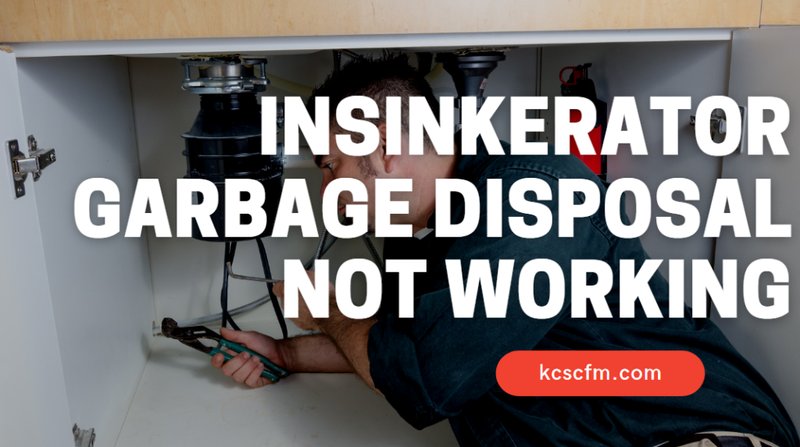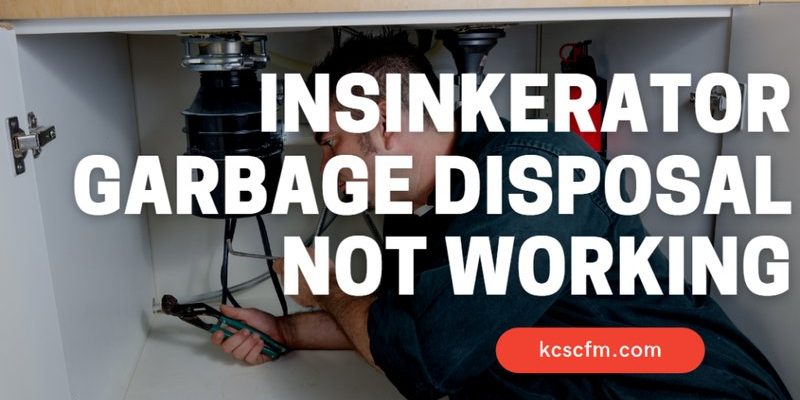
Imagine your Insinkerator as a diligent worker in your kitchen, always ready to grind away food waste. But like any hard worker, it sometimes encounters problems, signaling them to you with error codes. The E1 error is like a frown on your worker’s face, indicating there’s a hiccup somewhere. This code can surface for various reasons, and understanding what it means is the first step toward ensuring your kitchen operations continue smoothly.
So, you might ask, “Is it dangerous to keep using the disposal with this error?” Well, it depends on what’s causing the error. Our objective is to delve deeper into the causes, what you can do about it, and whether you should continue pressing that switch.
Understanding Error Code E1 on Your Insinkerator
The Insinkerator is designed to give you heads-up warnings through error codes, with E1 being one of these alerts. But what does it actually mean? In simple terms, Error Code E1 suggests there’s an issue with the electrical components or the motor of your disposal. Think of it as the equivalent of your car’s check engine light: it indicates something’s amiss, but not necessarily catastrophic.
One common cause of the E1 error is overheating. If your disposal has been running non-stop or is jammed with more waste than it can handle, it may overheat and trigger this alert. Consider it a safety feature that protects your appliance from frying the internal circuits. Just like how you wouldn’t force a motorbike up a steep hill without adequate fuel, your garbage disposal needs a break when it’s overworked.
At times, the E1 error can be a sign of faulty wiring or loosened connections. If the internal components aren’t getting a steady flow of electricity, the machine can’t operate correctly and throws an error code to alert you. It’s similar to a flickering lamp that isn’t receiving power constantly. In such cases, continuing use without inspection could lead to bigger issues down the road.
Steps to Address Error Code E1
Now that we understand what the E1 code signifies, the next step is handling it like a pro. The first action is to ensure safety. Disconnect your Insinkerator from the power source. You wouldn’t want any shocking surprises as you investigate, after all. Safety gloves can be a good idea, adding an extra layer of protection.
Once you’ve disconnected the power, examine the disposal for any visible obstructions causing a jam. Sometimes, hard-to-grind items like bones or fibrous vegetables might be the culprits. Removing these can sometimes resolve the issue. It’s akin to unclogging a garden hose that’s kinked, allowing the water (or in this case, electrical current) to flow smoothly again.
If no obstructions are visible and the issue persists, it may be time to consider examining the wiring. For most of us, electricity can be a bit of a mystery, so this might be a good time to call in a professional. A qualified technician can determine if the electrical connections need tightening or replacement, ensuring your disposal operates safely and efficiently.
Preventing Future Errors
You’ve tackled the E1 error, but what about the future? Ensuring the longevity and performance of your Insinkerator means taking some preventative measures. First and foremost, avoid overloading your disposal. Treat it with the same care you’d give a delicate machine, feeding it smaller amounts of waste at a time, rather than dumping everything in at once.
Regular maintenance checks can help too. Consider scheduling a professional inspection once a year to ensure all components are in top shape. Think of it like going for a routine dental check-up – it keeps everything in working order and catches small issues before they grow into major problems.
Finally, familiarize yourself with the common dos and don’ts of using garbage disposals. Knowing what not to put down your disposal, like certain fatty foods or coffee grounds, can go a long way in preventing jams and clogs that might lead to error codes.
In conclusion, while encountering an Error Code E1 can initially seem daunting, understanding its implications and taking appropriate actions can help ensure your Insinkerator remains a reliable kitchen companion. By addressing the error promptly and adopting preventative measures, you can keep your disposal running smoothly and safely for years to come.
